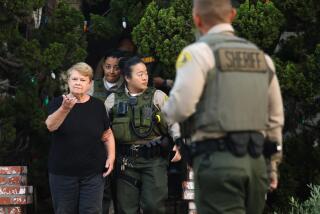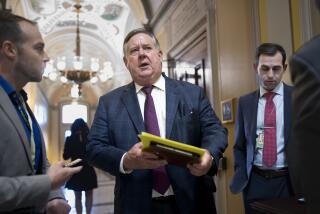Stench of CalPERS’ financial scandal lingers
- Share via
Whether we’re talking about corporate affairs or home ec, it’s a fundamental fact that housecleaning doesn’t work unless it’s thorough. Leave the smallest task undone, and the rats and bugs come swarming back.
So the question to ask about the financial scandal at CalPERS is this: Has the place been sufficiently scrubbed clean?
The affair is centered on placement agents, the middlemen hired by Wall Street firms and other money managers to snag investment capital from institutional investors.
The California Public Employees’ Retirement System, the largest public pension fund in the country with $225 billion in assets, is one of the biggest targets out there.
CalPERS has had a particular problem with a placement agent named Alfred Villalobos, a former member of the CalPERS board who hired himself out to several big investment firms, plainly on the expectation that he would use his connections to get them business. According to a lawsuit filed last year by the state attorney general’s office, Villalobos made $47 million from 2005 to 2009 by getting CalPERS to invest $4.87 billion with his clients.
The AG’s lawsuit and a just-released report on the Villalobos affair prepared for CalPERS by the Washington law firm Steptoe & Johnson paint a picture of corruption, moral corrosion and board-level inattention staggering in scale.
CalPERS directors and officials accepted gifts, cut secret deals and tried to subvert professional standards to serve Villalobos’ clients. Some of the ugliest behavior is laid to Fred Buenrostro, a Villalobos crony who served as CalPERS chief executive from 2002 to 2008, during which period Villalobos allegedly paid for his travel, first-class accommodations and even part of his wedding. After leaving CalPERS, Buenrostro took a job with Villalobos.
No criminal charges have been filed, but investigations are ongoing.
Perhaps the saddest aspect of the case is that it could be used as a pretext by unscrupulous politicians to attack public employee pensions generally. Already the backers of a ballot initiative to ratchet down retirement benefits are using it as an argument in support, which sounds a lot like blaming a house for becoming the target of an arsonist. The employees are the victims here.
CalPERS has responded to these disclosures by tightening up its rules regarding placement agents and board members. It successfully sponsored a law requiring placement agents to register with the state like any other lobbyists, set up an ethics hotline for employees and placed new restrictions on contacts between board members and investment staff. These items address abuses uncovered in the Villalobos scandal.
Are they enough? The scandal developed under the nose of the 12-member CalPERS board (and implicated some of those members, all now ex-members), so they can’t be absolved of responsibility. The Steptoe report and other sources say Villalobos, Buenrostro and others took steps to keep their machinations outside the view of most of the board, meeting out of state or at a Sacramento hotel that was on unions’ do-not-patronize list, ensuring that the board’s union members wouldn’t stumble upon them.
“Ninety percent of what was in the [Steptoe] report was news to everyone,” CalPERS board President Rob Feckner, who has served on the board since 1999, told me. Should it have come like such a bolt from the blue? Buenrostro’s favoritism toward certain investment managers was apparently so well-known among CalPERS staff that they had a name for them: “Friends of Fred.”
The staff eventually complained to Feckner, who started the ball rolling to fire Buenrostro by 2008. Still, when Buenrostro announced his retirement that April, Feckner lauded him fulsomely for his record of public service while failing to mention the ugly truth. Plainly, the public deserved to know the facts.
Taxpayers and public employees also deserve a stronger board. Currently, it comprises three state officials serving ex officio and nine members representing state agencies and other stakeholders such as retirees and employees.
“There’s no institution in the state that requires a stronger board than CalPERS,” said Robert Fellmeth, an expert on public administration at the University of San Diego. “But it has just the opposite.”
He recommends that members be appointed by the governor, with the approval of the Legislature. While that might not guarantee an aggressive, independent board that wouldn’t let a scandal slip by unnoticed, a change is surely worth debating.
More to Read
Inside the business of entertainment
The Wide Shot brings you news, analysis and insights on everything from streaming wars to production — and what it all means for the future.
You may occasionally receive promotional content from the Los Angeles Times.











